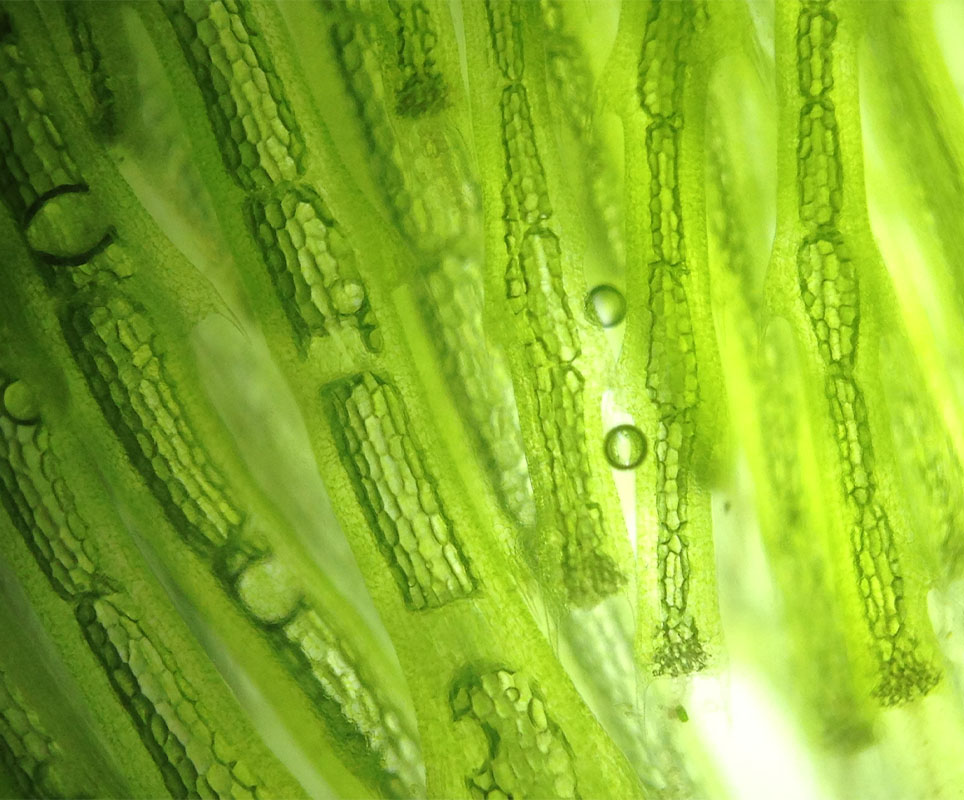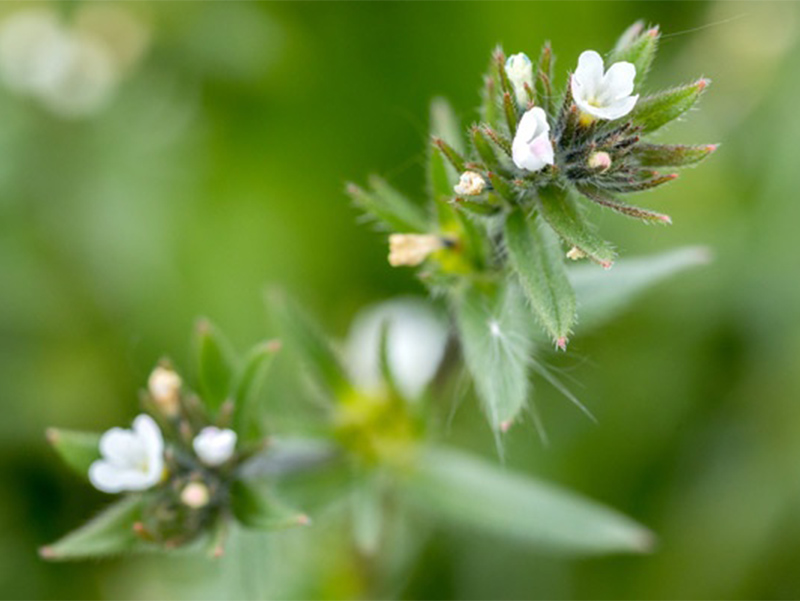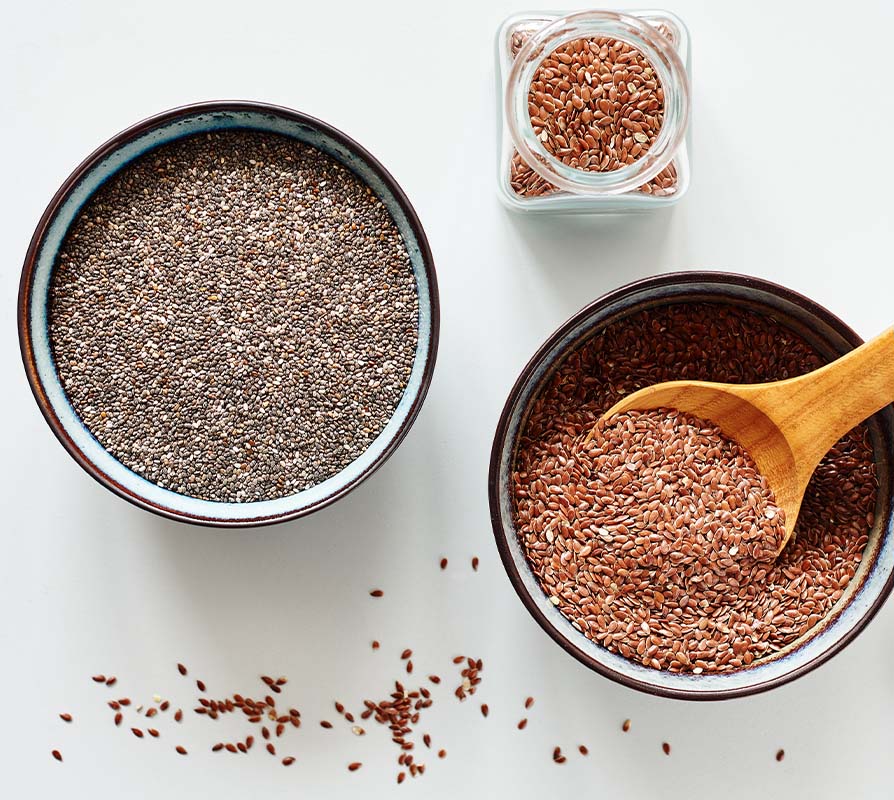This is the second of two articles on Omega 3 ingredients in the pet nutrition space. Read more about Omega 3 fatty acids, the health benefits they offer pets, and the need for alternative sources in Part One here.
Pet nutrition brands looking to deliver Omega 3 fatty acids through their products are finding themselves at a fork in the road. Down one path, the continued use of fish oil is poised to exacerbate existing issues along the supply chain, as well as contribute to the negative environmental impacts of overfishing. Down the other road, however, exists a range of alternative sources that can be leveraged alongside fish oil or on their own to deliver the same health benefits at lower costs to the planet.
“The Omega 3 industry is in some ways at an inflection point,” explained Andrew Hebard, chief executive officer and founder of Natures Crops International, Winston-Salem, NC. “Demand for Omega 3 ingredients is rising significantly, in part because of the growth in aquaculture, in part because of the trend toward concentrating the levels of EPA and DHA in supplements, and in part because the commodity oilseeds used in the background diets of humans and companion animals have lower levels of Omega 3s.”
In the industry’s ever-evolving search to deliver the very best for pets, suppliers and manufacturers are looking behind door No. 2 for more sustainable and reliable sources of Omega 3s.
The health benefits of Omega 3 fatty acids range from supporting skin, coat and joint health to helping balance inflammation, bolster the gut microbiome and improve metabolic functions in pets. They are also readily recognized among pet owners as health-promoting components of a regular diet, so it’s only natural to see them being adopted in the pet space with increasing enthusiasm.

According to the Food and Agriculture Organization (FAO), 90% of the world’s marine fish stocks were fully exploited, overexploited or depleted as of 2022.
| Source: ©TARAS – STOCK.ADOBE.COMGeert van der Velden, innovation manager at IQI Trusted Petfood Ingredients, Amersfoort, The Netherlands, noted Omega 3s have been historically prevalent in therapeutic or veterinary diets for pets. In today’s marketplace, however, these ingredients are cropping up more and more in treats, supplements and meal toppers, as well as in premium commercial diets for dogs and cats.
“Exploring alternative sources of Omega 3 fatty acids apart from fish oil addresses environmental concerns, accommodates dietary restrictions, and allows for customization of pet foods to optimize pet health and wellbeing,” said Jennifer Adolphe, Ph.D., pet technical services manager, ADM, Chicago.
Ingredient suppliers are innovating along this vein to bring renewable and plant-based Omega 3 sources to the pet food aisle.
Skipping the ‘middle fish’
Many fish species harvested for food actually obtain EPA and DHA through their consumption of phytoplankton that feed on microalgae, with microalgae being the initial source of the Omega 3s. Unlike the fish supply, microalgae is a renewable resource that can be planted again and again. Therefore, IQI Trusted Petfood Ingredients and Corbion have chosen to bring pets Omega 3 solutions straight from the source.
Corbion’s AlgaPrime™ DHA ingredient line, which is supported by IQI Trusted Petfood Ingredients, includes microalgae-based solutions offering between 33% and 35% DHA at minimum, making it one of the highest-concentrated sources of DHA available today. The ingredient is GMP+ Feed Safety Assurance and ISO 9001:2015 certified, and can be used in vegan and low-fat formulations, according to the company.

Fermenting microalgae allows Corbion to upcycle byproducts from the sugar industry while creating a sustainable, renewable source of Omega 3 fatty acids for pets in the process.
| Source: ©ONAIRJIW – STOCK.ADOBE.COMAlgaPrime DHA ingredients are manufactured through a closed fermentation process. This allows the company to eliminate contamination risks from microplastics and PCBs — common sources of ocean fish contamination — which results in a clean ingredient with a predictable, fully traceable supply, said Luc Steenwelle, business director, animal nutrition, algae, Corbion, Amsterdam.
The ingredient line is also unique because it is available in both a liquid suspension and a dried biomass. According to van der Velden, leveraging the entire biomass creates a more thermally stable final product better suited for retort or extrusion cooking commonly used for pet food and treats. It also delivers proteins and fibers alongside Omega 3 fatty acids, and skipping the extraction process means there is no extraction byproduct to go to waste.
Another sustainable aspect of this ingredient is the way it’s processed. Corbion has established a commercial-scale precision fermentation facility in southern Brazil connected by pipeline to a sugar production plant, which serves as a key input for fermentation.
“The way we are set up, having our factory in the middle of the sugar cane fields next to a sugar refinery, using all the waste materials of sugar production…It’s a fully circular system — we are fully run on sugar,” Steenwelle said. “That leads to a very low carbon footprint, and we have LCAs to support that.”
“It’s a fully circular system — we are fully run on sugar,” said Luc Steenwelle, Corbion.
According to that LCA, which was peer-reviewed and published in the December 2021 issue of Algal Research, algae-based Omega 3 DHA products have a 30% to 40% lower climate impact compared to fish oil products on average. According to van der Velden, Corbion’s AlgaPrime DHA ingredient also helps to preserve ocean biodiversity.
AlgaPrime DHA is preserved with natural antioxidants, resulting in a highly palatable final product, according to Steenwelle. In a 20-dog palatability study comparing AlgaPrime DHA with linseed oil, salmon oil, high Omega 3 fish oil and tallow, AlgaPrime DHA was the first choice for most dogs. Sixty-eight percent chose AlgaPrime DHA over linseed oil on first preference, 56% preferred AlgaPrime DHA to salmon oil and 68% preferred AlgaPrime DHA to high Omega 3 fish oil. The only exception was tallow, which was chosen first by 53% of dogs who participated in the study.
For processors looking to create plant-based dog food formulas fortified with Omega 3 fatty acids, microalgae and other plant-based sources pose a key opportunity for delivering efficacious levels without relying solely on fish oil, van der Velden reiterated.
Betting on botanicals
For Natures Crops International, a B Corp-certified ingredient supplier with a focus on specialty oils, the answer to this Omega 3 conundrum was Ahiflower®, a plant-based solution that took the company 30 years to develop and commercialize.
“We screened hundreds of different species, and the one that was head and shoulders above everything else was Buglossoides arvensis, a small native weed species found throughout North America, Europe and Asia,” Hebard said. “…Through traditional plant breeding and our agronomic partnerships with farmers, we developed it into a very ‘planet friendly’ crop we now call Ahiflower. Its unique oil and Omega composition delivers all the health benefits for our pets usually associated with fish, algal, evening primrose and flaxseed oils combined.”
"Diversifying our sources of Omegas also introduces a wider array of Omega 3s into our pets’ diets, which from a health and wellness perspective is a good strategy,” said Andrew Hebard, Natures Crops International.
Ahiflower works by delivering Omega 3 fatty acid SDA and Omega 6 fatty acid GLA to a pet through Buglossoides arvensis seed oil. The oilseed crops are grown using regenerative and traceable agricultural practices in the United Kingdom, then minimally processed, filtered, and refined at low temperatures to create an oil with a clear pale-yellow appearance and a clean, nutty aroma.
Attributes of the ingredient lend themselves to palatability, traceability and sustainability. According to Hebard, every acre of Ahiflower produces as much oil as 500,000 anchovies. Additionally, Natures Crops International leverages vertical integration to manage its Ahiflower supply chain.
Building on its unique oil offering, Natures Crops International recently introduced Omega Crumbles, which is the result of the company’s own method used to process seeds of the Ahiflower plant. This new ingredient delivers both Omega 3 fatty acids alongside minerals and amino acids.
As Ahiflower enters the marketplace, new research is being released that could upend the industry’s current understanding of how plant-based dietary sources of Omega 3s are metabolized, according to Hebard.

Ahiflower is a proprietary plant-based source of Omega 3 and 6 fatty acids that offers pet health, sustainability and traceability benefits.
| Source: Natures Crops International“There are two key takeaways from the most recent research,” he shared. “The first is that the plant-derived Omega 3 SDA converts efficiently and effectively not only to EPA, but also forms DHA as efficiently as preformed DHA in key tissues like the brain and liver. The second is that, as a result of this efficient SDA to EPA and DHA conversion, the mammalian body produces many valuable metabolites that are not produced when taking EPA and DHA alone.”
Purina PetCare recently wrapped a research trial that showed horses fed dietary Ahiflower oil had significantly better circulating EPA compared to the effects of dietary flaxseed oil. Ahiflower oil also scored higher for palatability and total Omega 3 accrual in whole blood samples compared to flaxseed oil, while also lowering arachidonic acid (AA), an Omega 6 fatty acid that, in excess, may lead to inflammation.
“Diversifying our sources of Omegas also introduces a wider array of Omega 3s into our pets’ diets, which from a health and wellness perspective is a good strategy,” Hebard said. “Broad spectrum ‘multi-Omegas’ like Ahiflower offer a much closer match to dietary needs than a single source of EPA and or DHA can do.”
Other plant-based alternatives
This sentiment of expanding nutritional diversity to support pet wellbeing is reflected by Patrick Backowski, director at Anchor Ingredients, Fargo, ND. The company offers flaxseed and chia seed ingredients as vehicles for delivering Omega 3 fatty acids to pets through plants.
“Both flaxseed and chia seed are plant-based alternatives that help mitigate concerns about oceanic depletion, ensuring a more inclusive approach to both pet nutrition and environmental responsibility,” Backowski said.
Flaxseed is not a newcomer to the pet food space, but is getting new attention for its ability to deliver Omega 3 fatty acids through environmentally friendly practices. Anchor Ingredients offers flaxseed and chia seed in whole and milled formats, allowing them to be included in various pet food formulations, according to Backowski.

Plant-based sources from flax, chia, canola, soy, sunflower and cottonseed can help pet food processors meet demand for Omega 3 inclusions and sustainability in one fell swoop.
| Source: ©NATALIIA SIROBABA – STOCK.ADOBE.COMBoth flaxseed and chia seed are key sources of ALA, which is a precursor to EPA and DHA. This means pets can synthetize EPA and DHA on their own through the digestion of ALA, although natural conversion rates are relatively low. For this reason, Backowski suggests pets that require Omega 3s for therapeutic reasons may be better off getting them from marine sources, like fish oil or microalgae, or through a combination of marine and plant sources, rather than just from plants alone.
Anchor Ingredients’ flaxseed and chia seed ingredients are also grown regeneratively through its AnchorREGEN program, through which the company works with grower partners to implement sustainable farming practices.
“Growing flaxseed and chia seed requires minimal water and land resources compared to fish farming or harvesting, contributing to the conservation of natural habitats and biodiversity,” Backowski said. “Furthermore, promoting the use of flaxseed and chia seed supports agricultural diversity and encourages the adoption of sustainable farming practices that prioritize soil health and ecosystem resilience.”
Other plant-based sources of Omega 3 fatty acids include soy and canola oils. ADM offers these alongside flaxseed oil as part of a well-rounded portfolio of plant-based Omega sources.
“While these plant-based Omega 3 sources may not match the EPA and DHA concentrations found in fish oil, they offer advantages in terms of environmentally conscious sourcing, accessibility and versatility,” Adolphe shared.
Clearly, there is no shortage of options when it comes to supplementing or replacing fish oil in pet nutrition products for more eco-friendly sources of Omega 3s. The onus sits now with suppliers to successfully market these solutions, and on manufacturers to adopt them as part of their own ambitions to serve both pets and planet.
“With demand rising and traditional marine supplies being tenuous in 2023 and 2024, now is the time for industry leadership to think towards finding long term, robust, sustainable and price competitive solutions,” Hebard concluded. “It’s not that difficult to solve, it just needs action.”
This is the second of two articles on Omega 3 ingredients in the pet nutrition space. Read more about Omega 3 fatty acids, the health benefits they offer pets, and the need for alternative sources in Part One here.





